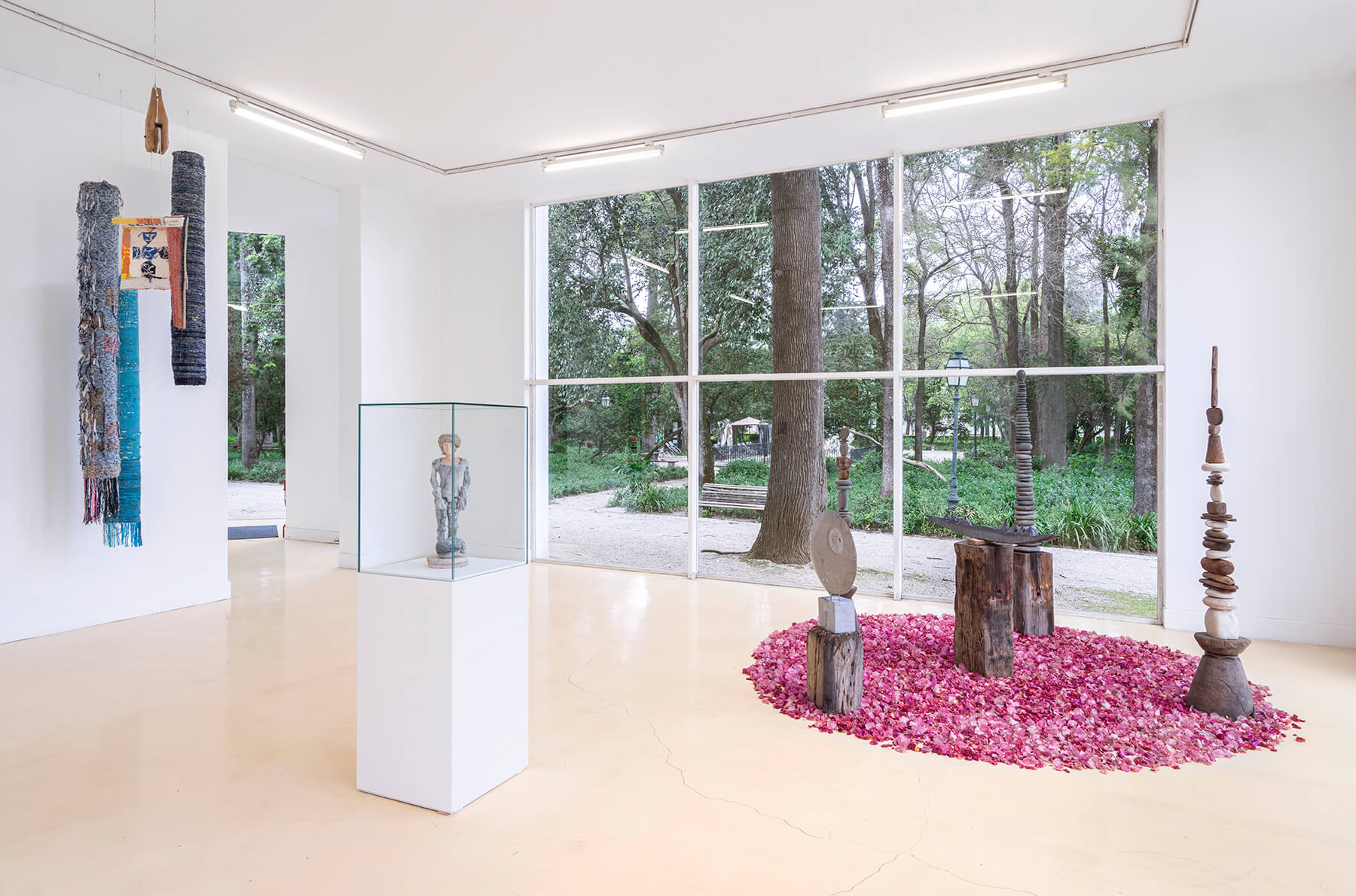Elisa Aragão: “Lagos has been my stage of life: here I have met many Europeans and been dazzled by the generosity of nature that has been so much a part of my work.” We find this sentence of yours in the catalogue “A win win story” / O todo é superior à soma das partes, Obras de 1979 a 2007. How was this experience of moving from a big city to Lagos in the early 1980s?
Vera Gonçalves: I come from a Lisbon family, and I never knew what it was like to go on “holidays back home”, however our secondary home in Sintra always taught me where the great moments of peace, beauty and belonging were to be found. Moving to the Algarve, to another territory, together with another group of intellectuals, was to discover another experience; it was a sunny nature, unpopulated, near the sea, where there was no time wasted, and therefore it was more conducive to my artistic practice.
EA: In the exhibition at Pavilhão Branco we find several of your works, always in relation with Lagos, with the beach, with what the sea carries to the shore, a willingness to receive and to give, with nature as a partner of creativity. How has this creative process evolved over the years?
VG: It is true that my creative process has evolved over the years, and I see it in the sense of “wanting to become autonomous”. By this I mean that, at the beginning, our journey relies on materials presented by art history, and the academic world, the bronze, the marble, the noble materials. On my walks along the Costa Vicentina Natural Park, I came across beautiful materials that should be shown, which I thought were as noble as those that had been taught to me. So, little by little I also became their messenger.

Installation view; This is a Bar…ou Praia de Banhos – Joaquim Bravo, Turismo e o Algarve; Pavilhão Branco; 2022. © João Neves
EA: When I look at the installation “As Pedras, as Madeiras e as Flores” (“The Stones, the Woods and the Flowers”) in this exhibition, the first thought that comes to my mind are the mariolas that are scattered throughout our mountains that serve to guide shepherds in foggy weather and hikers along the different trails. We find mariolas in the National Park of Peneda-Gerês, as well as in Serra da Estrela. Given the theme of that particular room that is related to the sea, the ‘discoveries’ and the relationship of Lagos with D. Sebastião, “who one day will arrive on a foggy morning”, I think the use of piled stones surrounding a boat in a sea of bougainvillea is curious. Could these washed-out stones, gathered between the tides, be a point of orientation, a different kind of mariola?
VG: This whole framework is my vision of the great richness of the Algarve. Here I discuss the hard Earth burnt by the Sun, the immense Sea that takes and brings everything, the musicality of a distant world and the fresh generosity of the Gardens.
EA: Lagos has this historical relationship with D. Sebastião and other national myths that endure today through tourism. The use of the Phoenician eye symbolising good omens on the small Portuguese fishing boats in the logos of Atelier VER and the Shop/Gallery Terra à Vista in Marina de Lagos also refer to this place of myths, history and travel. How did you start this path of opening two cultural spaces that could be both a meeting place for different artists, art, and for people who visit Lagos and want to acquire a souvenir?
VG: I started this path with Atelier VER, in Espiche village, it went well, and later I opened the Loja/Galeria Terra à Vista, in Marina de Lagos, already with a wider and more ambitious project in mind. My interest with the creation of these two spaces, which ran over 20 years, was to provide visibility to independent artists, hence the use of the beautiful Phoenician symbol. The existence of these permanent exhibition spaces created the opportunity for contemporary artists from diverse fields to sell their work, without any conditions. Work was done during the quiet time of winter, and later the pieces were presented to be sold during the busy season in the Algarve. To show and sell the work in a more direct way was the aim! This ensured the artists their creative freedom and financial autonomy.

Loja Galeria Terra à Vista; 1994. © Vera Gonçalves
EA: Both Atelier VER and Loja/Galeria Terra à Vista were working spaces, exhibition spaces for different contemporary artists from different fields, and places for sale, providing financial autonomy and dispensing with intermediary agents. The sale of works (art, handicrafts, souvenirs) to tourists turned out to be an extra source of income for many of the artists who lived and still live in the Algarve. The present exhibition delves into this duality and relationship between these supposed “two worlds”: tourism and art. In your artistic activity, how do you deal with the meeting or mismatch between these two universes: art and “tourist souvenirs”?
VG: I see the “souvenirs for tourists” in the products of mass production, made in China. Those never had a place in our spaces reserved for art objects, where all pieces were unique, fruit of a creative work, with the conscience and soul inherent to each creator. Just like the individual or collective work of musicians who can express themselves in various ways, between folk, popular, erudite music, also in crafts and visual arts the world of these artists is diversified, and can be more detailed, more reflected, or more spontaneous, lighter… These are diverse fields, but they are always genuine.

